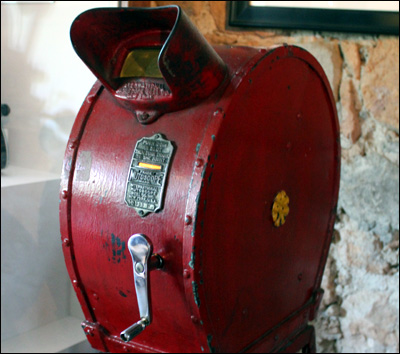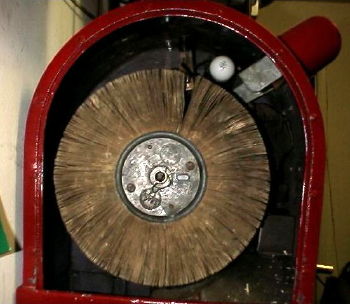What's a Mutoscope
OK, so the American Mutoscope and Biograph Company, later more frequently known as Biograph, was Edison's key competitor in the early film industry. W. K. Dickson had been the key engineer in charge of creating the Edison camera and viewer. However, in 1895, he left Edison and founded his own company along with several other inventors and entrepreneurs of the era. Only one problem: Edison owned all the patents so this new company had to make cameras and viewing devices that did not infringe Edison's rights. The answer was the Mutoscope. A Mutoscope was essentially a large, mechanically driven flip book. Hundreds of individual photos were placed on a drum which the user rotated with the aid of a hand crank while he or she viewed the photos through an eyepiece. Here's what the inside of one looked like:


Mutoscope and Biograph also had to develop different kinds of cameras. Again to avoid the Edison patents they created a new camera that used a larger format than Edison's and used friction rather than sprocket drive to move the film (the camera actually punched spocket holes in the fim). In 1902, following a lawsuit against Edison, Biograph was allowed to use the smaller Edison film.
In the realm of total trivia (and useless for this class), as a kid I got to use one of these things. I spent summers at a camp in upstate New York. Occasionally, they would take us to Frontier Town, a 1950s-60s Western themed amusement park near Lake George. It was full of all kinds of old junk including one of these things. I remember turning the crank.